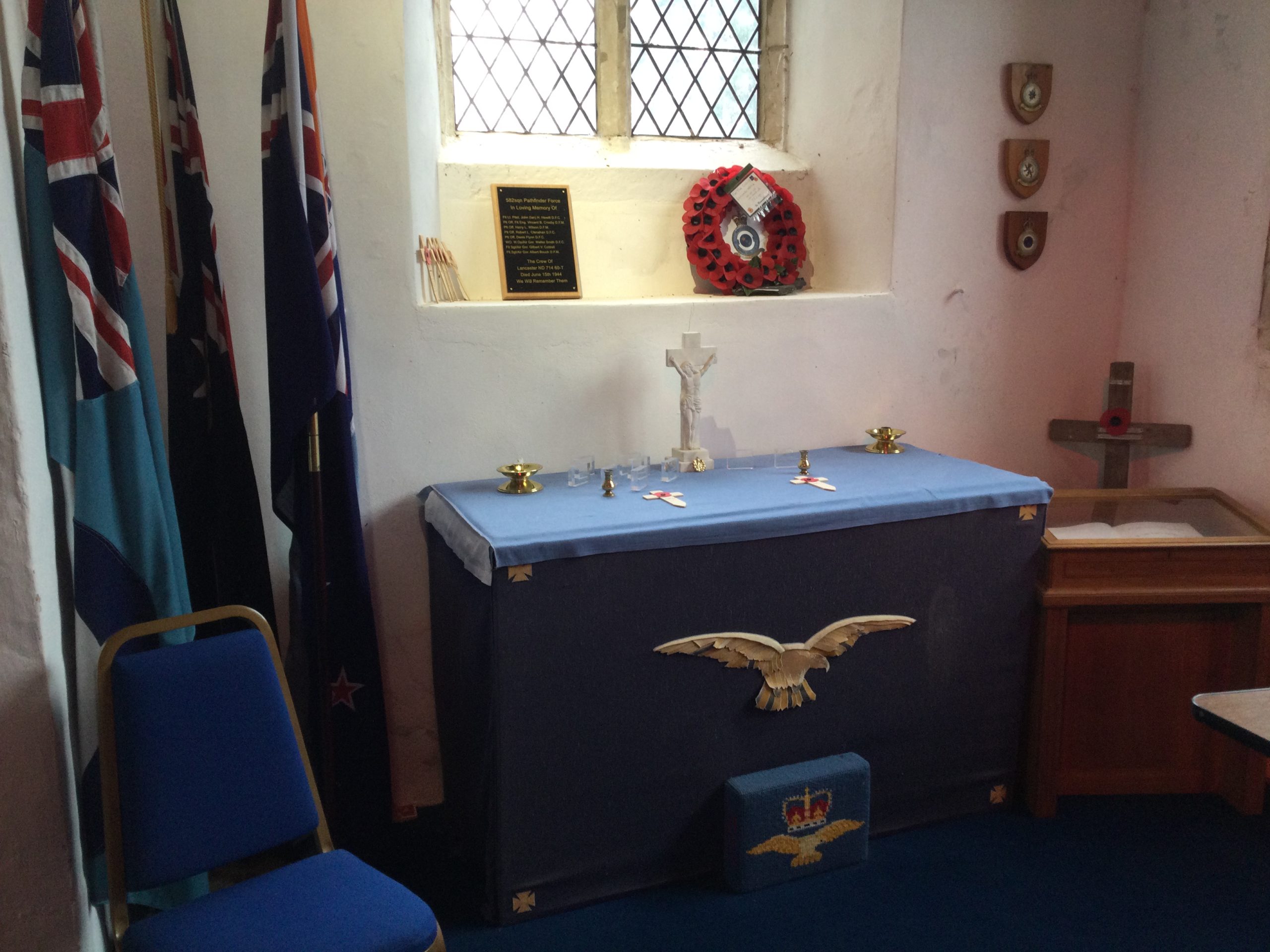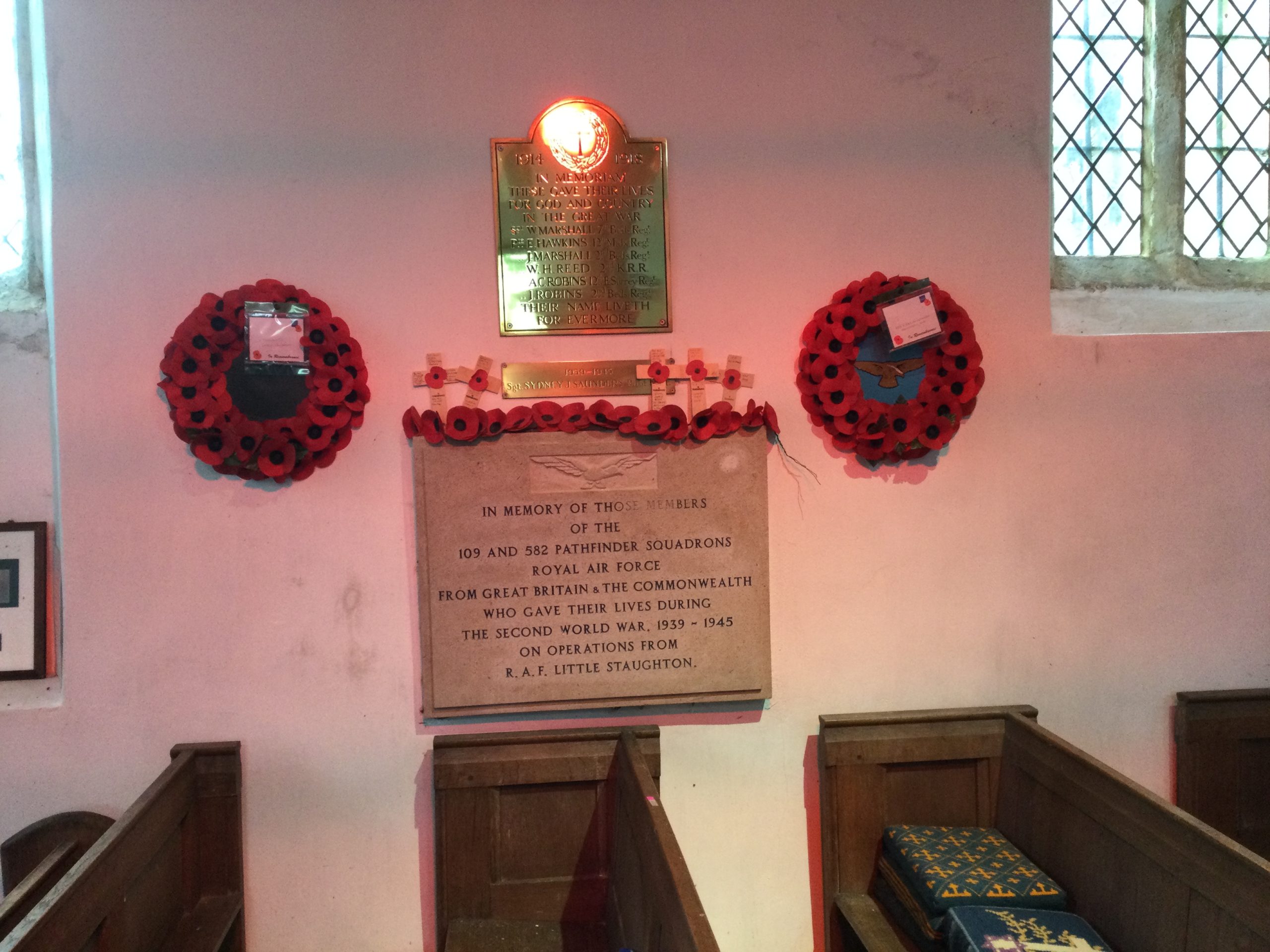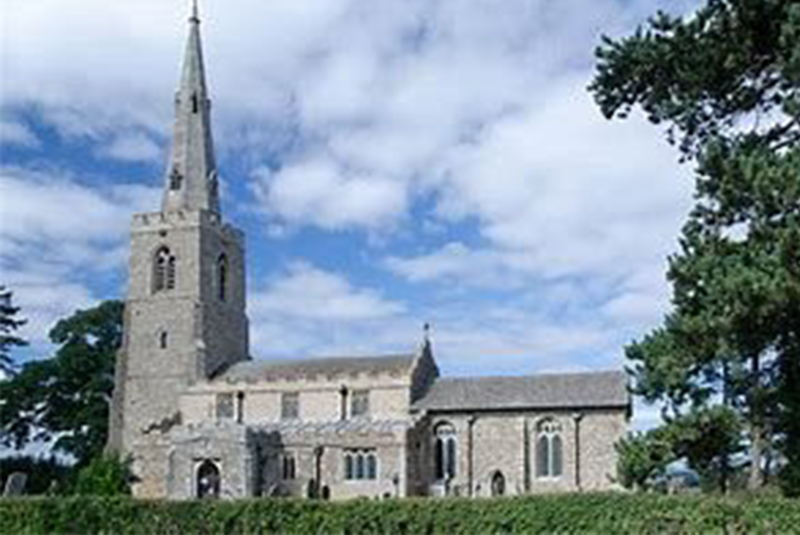All Saints Church
Little Staughton
Team
Led by Rev Nicki Bland
Church Warden Clive Shaw.
Secretary Marian Davies
Treasurer Gill Shaw.
Children’s Activities and other events shared with the rest of the Benefice.
Address: Church Lane, Little Staughton, MK44 2BL
All Saints Contact form
History
The history of All Saints Church can be traced back to 12th century although it is likely that the present church occupies a much older site of worship. Approximately a quarter of a mile due east of the church is a moated enclosure which was the stronghold of Sir Adam de Creeting, one of the knights of Edward I. The church has early links with the Knights Templar who held land in the village and had a preceptory in the nearby village of Melchbourne. The Church’s Patron between 1245 and about 1330 was the Master of the Templars in England. From 1639, the Patron has been Corpus Christi College Oxford. A chalice with cover paten (which is not kept in the church) bears the arms of Bishop Fox of Winchester who was founder of the college.
For much of its existence the church was dedicated to St Margaret, a 4th century Virgin Martyr from Antioch who was one of the most popular saints in the early English Church. The church’s name was changed to All Saints at some time during the 19th century for reasons which have been lost but the link with St Margaret was re-established when the church’s small side chapel was re-dedicated to her in 1937 on the tenth Sunday after Trinity which was close to her traditional feast day of 20th July.
The nave was built in 13th century and the south aisle in 14th century. In 15th century, the chancel was rebuilt and the tower added. The tower still contains one bell which was made in about 1450 by a woman foundress called Johanna Hille.
The church, like many others, suffered badly during the Reformation when its medieval decoration, furnishings, statues and stained glass were all destroyed. Between 1644 and 1647, the living of Little Staughton was sequestered to help pay the cost of the Civil War. During the 18th century the internal appearance of church changed to reflect the religious fashions of the times. The church acquired a west gallery and a three-tier pulpit and desk. There were a number of enclosed pews including the Squire’s seat which was described in 1852 as “flaming with scarlet and gold, elevated and o’ertopping all”.
During the 19th century efforts were made to keep the church in good repair but these were inhibited when lead was stolen from the roof and the spire damaged by lightening in the 1830s. However, some changes were made including the raising of the Chancel roof above the 15th century one to give it a steeper pitch.
In 1900 the spire was partially demolished by lightning and considerable damage was caused to the west end of the church. The treble bell was also damaged when the spire fell and had to be recast. The truncated spire was capped and, when the church reopened in 1901, the west gallery had been removed along with the enclosed pews. Six years later, in August 1906 disaster struck again when the leaded windows in the west belfry and the west side of the south aisle were severely damaged in the “phenomenal storm” which hit the village with lightning, high winds and hail stones said to be the size “2s pieces”. In 1910 the spire was fully restored and in 1924-5 an organ chamber was added to the north side of the chancel.
In 1934 the bells were removed from the tower and sent to Messrs Mears and Stainbank of Whitechapel Foundry to be restored. Two of the bells were recast at that time. Work undertaken in the second half of the 20th century included the reconstruction of the tower parapet which was undertaken in 1982. The Millennium was marked by the installation of floodlights which now illuminate the church at week-ends and special occasions enabling it to be seen for miles around. In 2006, the spire was again seriously damaged but this time by human hands rather than an “Act of God”.
The Church has connections with the Gery, later Wade-Gery, family who lived nearby at Bushmead Priory and were Lords of the Manor of Bushmead. Many members of the family were buried in vaults under the chancel and, more recently, in the graveyard to the east of the Church. The one hatchment in the chancel is believed to be that of Wm Hugh Wade-Gery.
Parish registers exist from 1598 and those from 1598 to 1812 are available on microfiche from the Bedfordshire Family History Society.
The Church has close links to the Royal Air Force particularly 109 and 582 Squadrons, 8 Group Path Finder Force, Bomber Command which were based at Little Staughton between 1944-45. The Church contains a stone memorial and an RAF Book of Remembrance to the members of the Squadrons who flew from Little Staughton and lost their lives.



